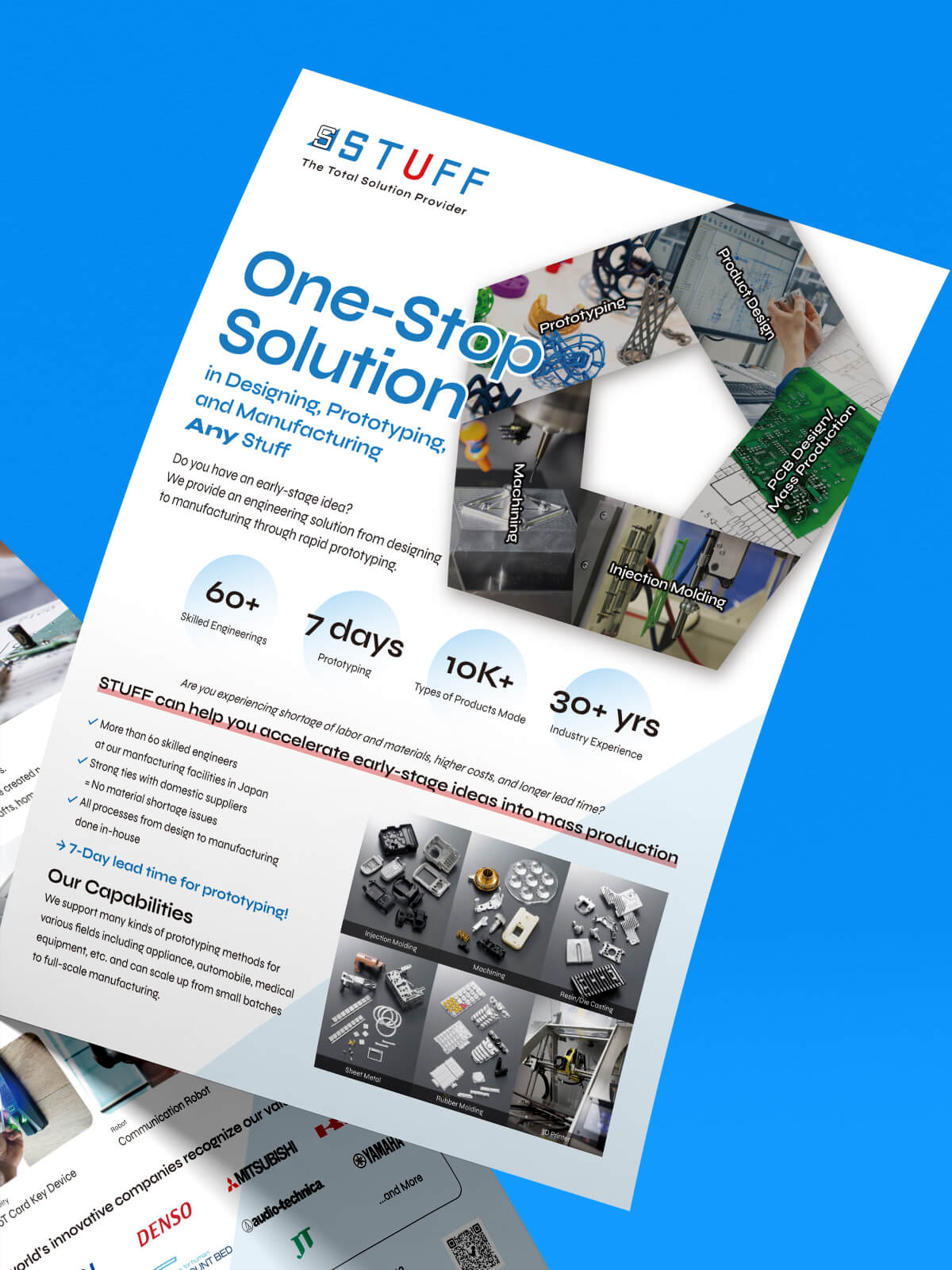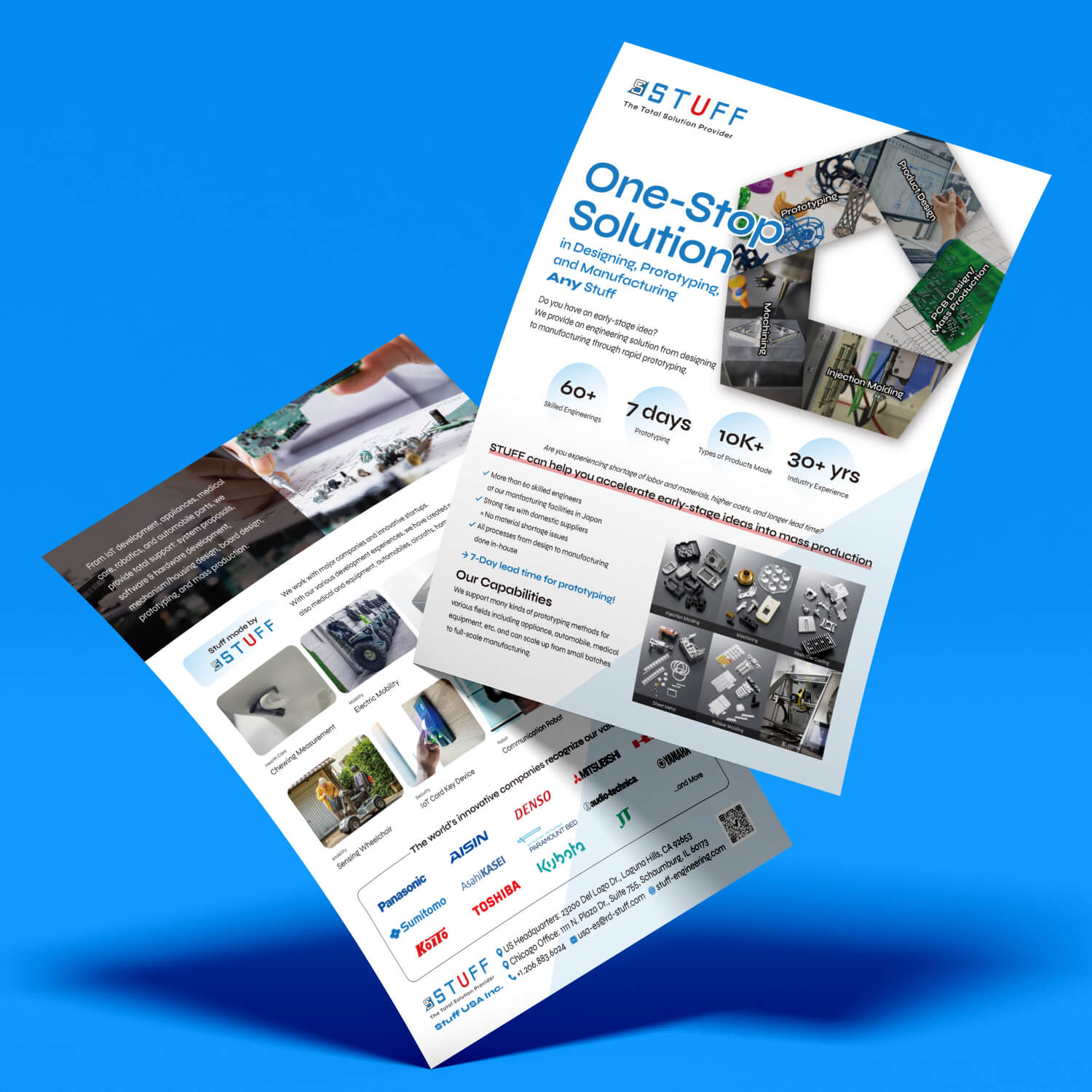June 4, 2025
The Top 8 Advantages of Rapid Prototyping
POSTED BY
Team STUFF USA
Rapid prototyping, a dynamic approach to product development, stands as the bridge between imagination and realization. In its essence, rapid prototyping is the swift translation of ideas into tangible prototypes, allowing for accelerated iterations and refinements. This method holds profound significance in product development, catalyzing innovation and efficiency.
It plays a vital role in bringing ideas into reality in the product life cycle. Its significance lies in its ability to transform abstract concepts into physical prototypes swiftly, providing designers, engineers, and stakeholders with a tangible platform for collaboration and iteration.
Rapid Prototyping stands as a contemporary approach to product development, enabling engineers to streamline design timelines by achieving faster iterations toward a final production-ready design. This innovative design process has been made possible by the integration of advanced manufacturing systems. The efficiency gains realized through rapid prototyping extend seamlessly across the entire design-to-production workflow.
Here are the top 8 advantages of rapid prototyping
1. Accelerated product development
In the ever-evolving landscape of product development, time is a precious commodity. Rapid prototyping emerges as the catalyst that propels ideas from conception to reality at an unprecedented pace, revolutionizing the traditional product development lifecycle.
Rapid prototyping shortens the product development lifecycle by providing a swift and iterative pathway from concept to prototype. Unlike traditional methods that may take weeks or months, rapid prototyping enables designers and engineers to quickly translate ideas into tangible models. This accelerated pace is owed to the utilization of cutting-edge technologies, such as 3D printing and computer-aided design, streamlining the entire development process.
2. Cost savings in prototyping
Traditional prototyping methods often incur significant costs due to prolonged production timelines and intricate manual labor. Rapid prototyping disrupts this paradigm by optimizing the use of resources. The efficiency gained through streamlined processes, such as 3D printing and computer-aided design, minimizes labor-intensive tasks, resulting in substantial cost reductions. Additionally, the ability to swiftly iterate designs and identify flaws early in the process mitigates the expenses associated with extensive post-prototype modifications.
3. Iterative design and refinement
Unlike static and linear design processes, rapid prototyping thrives on iteration. It introduces a dynamic feedback loop where designers and engineers can swiftly evaluate prototypes, identify areas for improvement, and cyclically iterate on the design. This iterative essence allows for a continuous refinement process, ensuring that each version is an enhancement upon the last.
4. Breaking communication barriers
Beyond the confines of internal teams, rapid prototypes become eloquent communicators with external stakeholders. Whether presenting a new product concept to investors, showcasing a design to potential clients, or seeking feedback from end-users, tangible prototypes offer a universal language that transcends technical jargon. Stakeholders can interact with and understand the product in a tangible form, providing valuable insights and ensuring that the final product aligns with the expectations and requirements of all involved parties.
5. Customization and Personalization
Rapid prototyping dismantles the constraints of mass production by empowering the creation of customized and personalized products. Through digital design and swift prototyping iterations, designers can cater to specific user preferences, be it in the dimensions of a product, its functionalities, or even its aesthetics. This ability to customize fosters a profound connection between users and their products, addressing diverse needs and preferences.
6. Time to market reduction
Rapid prototyping is a time-saving powerhouse in the product development journey. Unlike traditional methods that can be slow with extended design phases and tooling processes, rapid prototyping taps into cutting-edge technologies for a swift translation of ideas into tangible prototypes. This digital approach enables real-time modifications, expediting the entire design process.
Furthermore, the beauty of rapid prototyping lies in sidestepping complex tooling procedures common in traditional manufacturing. Techniques like 3D printing allow direct creation from digital models, eliminating the need for intricate setups. This streamlined approach significantly cuts down the overall timeline, empowering companies to introduce their products to the market at an unprecedented pace.
7. Increased innovation and creativity
Rapid prototyping serves as a fertile ground for cultivating innovation by providing an iterative playground for designers and engineers. Unlike traditional methods that often limit experimentation due to time and cost constraints, rapid prototyping encourages a fearless exploration of ideas. The ability to quickly visualize and test concepts allows teams to push boundaries, iterate rapidly, and refine ideas with minimal risk.
The iterative nature of rapid prototyping also encourages a collaborative environment where cross-disciplinary teams can contribute to the innovation process. Real-time feedback loops, made possible by the swift production of prototypes, create a dynamic exchange of ideas, fostering an environment where innovation becomes a collective effort.
8. Eco-friendly ingenuity
Rapid prototyping stands as a beacon of sustainability by challenging the traditional narrative of excessive material consumption in product development. Unlike conventional manufacturing methods that often generate significant material waste through subtractive processes, rapid prototyping, particularly in additive manufacturing, operates with precision. The ability to build layer upon layer directly from digital designs ensures that materials are used efficiently, minimizing waste and reducing the environmental footprint of the production process.
Moreover, rapid prototyping allows for the creation of intricate and complex designs that were previously unattainable. This not only opens new possibilities in product development but also maximizes the utility of materials, leaving minimal scraps behind. The emphasis on creating only what is necessary contributes to a more sustainable approach to manufacturing.
Conclusion
In the symphony of innovation, where ideas take shape and creativity meets functionality, rapid prototyping emerges as the virtuoso, playing a pivotal role in transforming concepts into tangible reality. As we conclude our exploration of its transformative power, let’s summarize the top advantages that make rapid prototyping an indispensable ally in the dynamic world of product development.
At its core, rapid prototyping is the art of speed, efficiency, and iteration. It compresses development timelines, introducing a dynamic cycle of design, prototyping, and refinement. The result is not just a product; it’s a testament to the seamless integration of creativity and technology.

